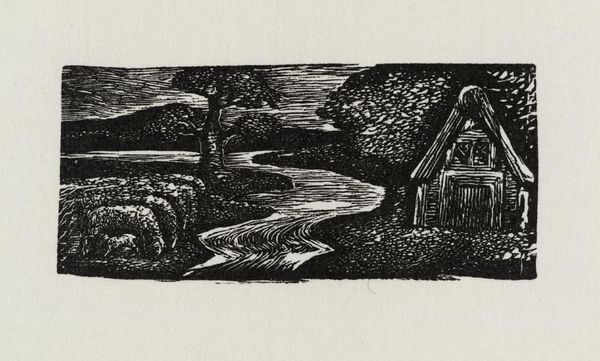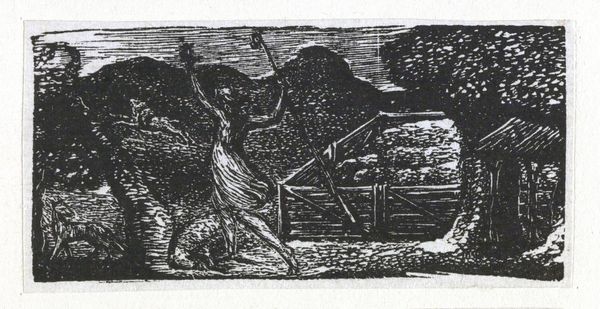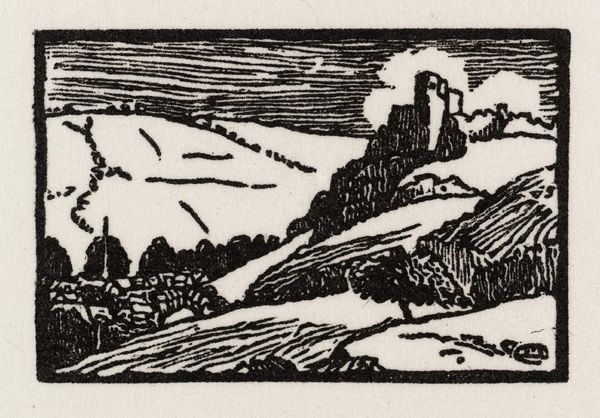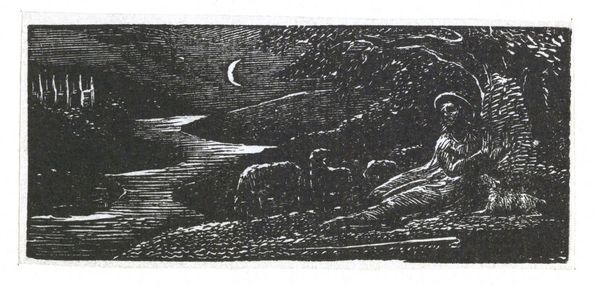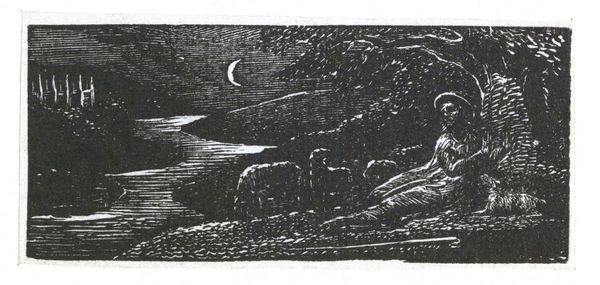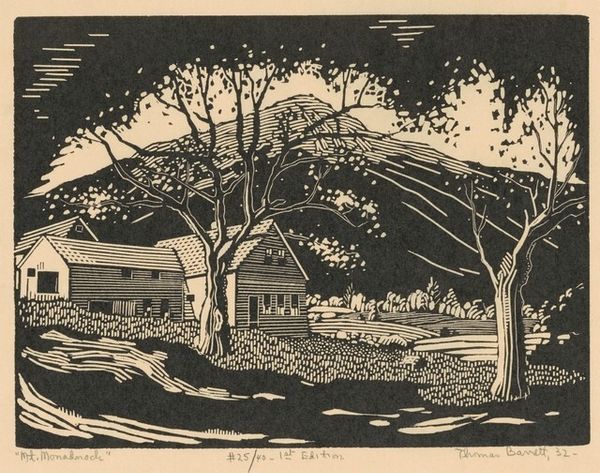
Dimensions: image: 33 x 72 mm
Copyright: NaN
Curator: William Blake, born in London in 1757, created this image, "Sabrina’s Silvery Flood." It’s currently part of the Tate Collection. Editor: It's striking, this miniature world of black and white. The strong contrast gives it a dramatic, almost dreamlike quality. Curator: Blake’s engravings often accompanied his poetry, and the pastoral setting here evokes a sense of idyllic, pre-industrial England, a theme prominent in his work. Editor: The flowing river dominating the foreground certainly feels like a potent symbol. Water is so often tied to ideas of purification, passage, and even the subconscious. Curator: Precisely. Blake was deeply critical of the social and political climate of his time. This image, while seemingly simple, acts as a critique of societal ills. Editor: Looking at it, I can't help but feel a sense of both tranquility and unease, like a fairy tale holding a hidden warning. Curator: It's a testament to Blake's ability to weave complex narratives into seemingly simple images, urging us to reconsider the accepted norms of his world. Editor: A haunting piece that reminds us of the enduring power of myth and symbol, even within the confines of such an intimate scale.
Comments
tate 8 months ago
⋮
http://www.tate.org.uk/art/artworks/blake-sabrinas-silvery-flood-a00118
Join the conversation
Join millions of artists and users on Artera today and experience the ultimate creative platform.
tate 8 months ago
⋮
Samuel Palmer was the most important of Blake’s followers, known as the Ancients. Palmer first met Blake in 1824. He described these illustrations to an imitation of the First Eclogue by the Roman poet Virgil as ‘visions of little dells, and nooks, and corners of Paradise’. Palmer’s art was particularly influenced by them. These prints appealed to the Ancients because they were the result of Blake’s experiments with a new medium; he had never engraved on wood before. Even at the age of sixty-four he wanted to make further explorations in his art. Gallery label, August 2004
